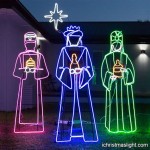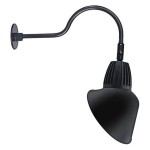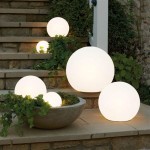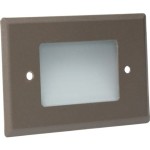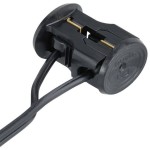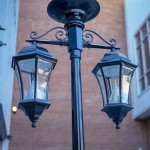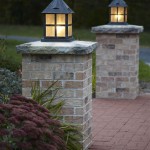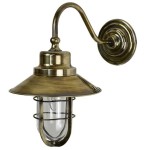Essential Aspects of Lighting for Your Outdoor Wedding
An outdoor wedding ceremony and reception can be absolutely magical, but it's important to consider the lighting to make your special day truly memorable. Proper lighting can enhance the atmosphere, create ambiance, and ensure that your guests have a safe and enjoyable experience. Here's a comprehensive guide to essential aspects of lighting for your outdoor wedding:
1. Types of Lighting
There are several types of lighting to consider for an outdoor wedding. Each type serves a specific purpose and can be used to create different effects:
- String lights: These are a popular choice for creating a romantic and whimsical atmosphere. They can be used to outline the perimeter of the ceremony or reception area, create overhead canopies, or highlight specific areas.
- Lanterns: Lanterns are a great way to add a touch of elegance and warmth to your wedding. They can be placed on tables, pathways, or hung from trees to create a soft, inviting glow. li> Path lighting: This type of lighting is essential for safety and convenience. It illuminates pathways and steps, ensuring that guests can move around safely after dark.
- Accent lighting: Accent lighting can be used to highlight specific features of your venue, such as trees, fountains, or sculptures. It can also be used to create dramatic effects, such as uplighting on walls or trees.
2. Planning and Design
To ensure a cohesive and effective lighting design, it's essential to plan ahead:
- Create a lighting plan: Determine the specific areas that need lighting, the types of fixtures you will use, and the overall ambiance you want to create.
- Consider the power source: Outdoor lighting requires access to electricity. Determine the location of outlets or generators and make necessary arrangements.
- Work with professionals: If you need assistance with design or installation, consider hiring a professional lighting designer or electrician.
3. Ambiance and Atmosphere
Lighting plays a crucial role in creating the ambiance and atmosphere of your wedding. Consider the following factors:
- Warmth: Use warm-toned lighting to create a cozy and inviting atmosphere. Amber and candlelight create a romantic and intimate glow.
- Brightness: Adjust the brightness to suit the time of day and the activities planned. Brighter lighting is necessary for dining and dancing, while softer lighting is more appropriate for ceremonies and receptions.
- Mixing colors: Combining different colors of lights can create a dynamic and eye-catching display. Consider using colored gels or filters to add pops of color to your lighting.
4. Safety and Security
Safety should always be a priority when planning your outdoor wedding lighting:
- Install adequate lighting: Ensure all walkways, steps, and potential hazards are well-lit to prevent accidents. li>Check electrical connections: Make sure all electrical connections are secure and weatherproof to prevent any safety risks.
- Consider security lighting: Install motion-activated lights or security cameras to deter unwanted guests and ensure the safety of your guests and property.
5. Sustainability and Environmental Considerations
When choosing lighting for your outdoor wedding, consider sustainability and environmental impact:
- Energy-efficient fixtures: Opt for LED or solar-powered lighting fixtures to reduce energy consumption and environmental impact.
- Reusable and degradable materials: Avoid using single-use plastics and opt for reusable or biodegradable materials for lanterns, decorations, and other lighting elements.
6. Weather Considerations
Weather conditions can significantly impact your outdoor wedding lighting:
- Waterproof fixtures: Choose lighting fixtures that are weatherproof and can withstand rain or moisture.
- Backup plan: Have a backup plan in place in case of inclement weather, such as additional lanterns or candles.
7. DIY vs. Professional Installation
Whether you choose to DIY your wedding lighting or hire a professional depends on your budget, skills, and time constraints:
- DIY: If you have the time and skills, DIY lighting can be a budget-friendly option. However, it's important to ensure safety and proper installation.
- Professional installation: Hiring a professional lighting designer or electrician can ensure a flawless and safe lighting design. They can handle complex installations and provide valuable advice.
By following these essential aspects of lighting for your outdoor wedding, you can create a magical and unforgettable atmosphere that will enhance the beauty and enjoyment of your special day.
:max_bytes(150000):strip_icc()/aj_640-1f661c131d764b2599fa8abae8d1b3c7.jpg?strip=all)
40 String Light Ideas For Your Wedding

28 Outdoor Wedding Lighting Ideas To Set The Mood

11 Breathtaking Outdoor Wedding Lights Ideas
:max_bytes(150000):strip_icc()/__opt__aboutcom__coeus__resources__content_migration__brides__public__brides-services__production__2019__04__23__5cbf5bb5fe0be50636c40b0a_pablo-laguia-832c30c3597b4e4bb43f66b2bbba28f8.jpg?strip=all)
40 String Light Ideas For Your Wedding

Outdoor Wedding Lighting Ideas How To Light An

5 Popular Types Of Outdoor Wedding Reception Lighting Designers

11 Breathtaking Outdoor Wedding Lights Ideas

Wedding Lighting For Outdoor Celebrations Rock My

5 Popular Types Of Outdoor Wedding Reception Lighting Designers

Backyard Wedding Lighting Decoration Ideas Backyardweddinglightingideas Themes Outdoor Garden Decorations
